-
 Bitcoin
Bitcoin $108,017.2353
-0.81% -
 Ethereum
Ethereum $2,512.4118
-1.58% -
 Tether USDt
Tether USDt $1.0002
-0.03% -
 XRP
XRP $2.2174
-1.03% -
 BNB
BNB $654.8304
-0.79% -
 Solana
Solana $147.9384
-1.76% -
 USDC
USDC $1.0000
-0.01% -
 TRON
TRON $0.2841
-0.76% -
 Dogecoin
Dogecoin $0.1636
-2.09% -
 Cardano
Cardano $0.5726
-1.72% -
 Hyperliquid
Hyperliquid $39.1934
1.09% -
 Sui
Sui $2.9091
-0.59% -
 Bitcoin Cash
Bitcoin Cash $482.1305
0.00% -
 Chainlink
Chainlink $13.1729
-1.54% -
 UNUS SED LEO
UNUS SED LEO $9.0243
-0.18% -
 Avalanche
Avalanche $17.8018
-1.90% -
 Stellar
Stellar $0.2363
-1.69% -
 Toncoin
Toncoin $2.7388
-3.03% -
 Shiba Inu
Shiba Inu $0.0...01141
-1.71% -
 Litecoin
Litecoin $86.3646
-1.98% -
 Hedera
Hedera $0.1546
-0.80% -
 Monero
Monero $311.8554
-1.96% -
 Dai
Dai $1.0000
-0.01% -
 Polkadot
Polkadot $3.3473
-2.69% -
 Ethena USDe
Ethena USDe $1.0001
-0.01% -
 Bitget Token
Bitget Token $4.3982
-1.56% -
 Uniswap
Uniswap $6.9541
-5.35% -
 Aave
Aave $271.7716
0.96% -
 Pepe
Pepe $0.0...09662
-1.44% -
 Pi
Pi $0.4609
-4.93%
What are the best RSI levels to use for Bitcoin (e.g., 80/20 vs 70/30)?
Bitcoin traders adjust RSI levels to 80/20 for stronger trend confirmation, filtering false signals during volatile price swings.
Jul 05, 2025 at 07:17 pm
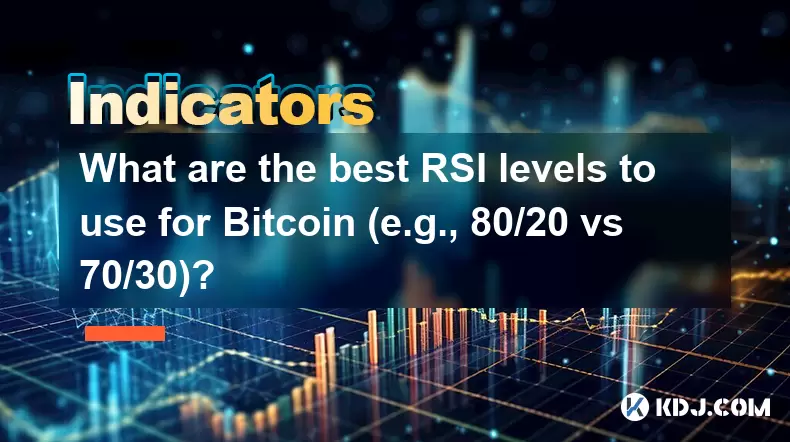
Understanding RSI in the Context of Bitcoin Trading
The Relative Strength Index (RSI) is a momentum oscillator used to measure the speed and change of price movements. In the Bitcoin market, where volatility can be extreme, understanding how to interpret RSI levels becomes crucial for traders. The RSI ranges from 0 to 100, with traditional thresholds set at 70 indicating overbought conditions and 30 signaling oversold territory. However, many traders argue that these default settings may not always suit the unique dynamics of cryptocurrencies like Bitcoin.
Overbought and oversold levels are not absolute signals but rather potential indicators of trend exhaustion or reversal. Because Bitcoin often experiences rapid price swings, relying solely on the standard 70/30 RSI settings can lead to false signals if not adjusted or interpreted within context.
Why Bitcoin Traders Consider Alternative RSI Levels Like 80/20
Given the high volatility and strong trends seen in Bitcoin's price action, some traders opt for more extreme RSI thresholds such as 80 for overbought and 20 for oversold. This adjustment helps filter out premature signals during strong uptrends or downtrends where the price might remain in overbought or oversold zones for extended periods.
For example, during a bull run, Bitcoin's RSI may hover above 70 for days without reversing. Using an 80 threshold could prevent traders from exiting positions too early based on what appears to be an overbought reading. Similarly, in a sharp downtrend, RSI dipping below 30 doesn't necessarily mean a reversal is imminent—using 20 as the lower boundary can help avoid entering trades prematurely.
Comparing 70/30 vs 80/20 RSI Settings for Bitcoin
When comparing 70/30 and 80/20 RSI settings, it’s important to understand how each affects trade signals and strategy outcomes:
- With the 70/30 setting, traders receive earlier warnings about potential reversals. However, this can result in more frequent false signals during strong trends.
- Using 80/20, traders wait for stronger momentum shifts before acting. While this may delay entry points, it often results in higher probability setups.
Here’s a breakdown of how each level functions in practice:
- 70/30 RSI: Ideal for range-bound markets or consolidating phases. Offers more trading opportunities but increases risk of whipsaws.
- 80/20 RSI: Better suited for trending environments. Helps avoid premature exits or entries during strong moves.
How to Apply RSI Settings in Your Bitcoin Trading Strategy
To apply either the 70/30 or 80/20 RSI effectively, you need to follow specific steps tailored to your trading platform and strategy:
- Open your preferred charting tool (e.g., TradingView, Binance native tools).
- Locate the indicator section and search for "RSI."
- Click on the RSI settings menu.
- Adjust the overbought value to either 70 or 80 depending on your preference.
- Modify the oversold value to 30 or 20 accordingly.
- Confirm changes and ensure the new levels are displayed clearly on the RSI sub-chart.
After applying these settings, observe how Bitcoin’s price reacts when RSI touches these thresholds. It’s also advisable to combine RSI with other technical tools such as moving averages, volume indicators, or support/resistance levels to increase accuracy.
Contextual Factors That Influence RSI Effectiveness in Bitcoin Trading
Several external and internal factors influence how effective RSI levels are in predicting Bitcoin price behavior:
- Market sentiment: During FOMO-driven rallies or panic sell-offs, even the 80/20 levels may fail to capture meaningful reversals.
- Timeframe: Short-term traders may prefer tighter RSI settings (e.g., 70/30) on intraday charts, while long-term investors might use 80/20 on daily or weekly charts.
- Volatility spikes: Sudden macroeconomic news or exchange-related events can distort RSI readings temporarily.
- Volume confirmation: High volume during RSI extremes adds credibility to potential reversals, regardless of whether 70/30 or 80/20 is used.
It’s essential to backtest both RSI configurations using historical Bitcoin data to determine which setup aligns better with your trading style and goals.
Backtesting RSI Levels for Bitcoin: A Practical Approach
To test which RSI level works best for Bitcoin, follow these detailed steps:
- Choose a reliable backtesting platform such as TradingView, Backtrader, or MetaTrader.
- Select a historical Bitcoin price chart spanning multiple bull and bear cycles.
- Apply both RSI configurations (70/30 and 80/20) separately.
- Mark all instances where the RSI crossed either threshold.
- Record subsequent price movements after each signal to assess accuracy.
- Calculate win/loss ratios, average gains, and drawdowns for each configuration.
This process allows traders to quantify which RSI setting yields more favorable results under different market conditions. It also highlights the importance of not treating RSI as a standalone tool but rather part of a broader analytical framework.
Frequently Asked Questions
Q: Can I use different RSI periods instead of adjusting the overbought/oversold levels?
Yes, changing the RSI period from the default 14 to higher values like 21 or 30 can smooth out readings and reduce noise. However, this should be tested alongside adjustments to overbought/oversold levels for optimal results.
Q: Does the effectiveness of RSI vary across exchanges?
While the underlying Bitcoin price remains consistent across major exchanges, slight variations in volume and order book depth may affect RSI readings. Always test on the exchange you actively trade on.
Q: Should I adjust RSI settings based on Bitcoin’s halving cycles?
Bitcoin’s volatility and trend strength tend to shift around halving events. Some traders adapt their RSI settings accordingly, especially during pre- and post-halving phases where price behavior differs significantly.
Q: How does leverage affect RSI interpretation in Bitcoin futures trading?
Leveraged positions amplify both gains and losses. In futures trading, RSI should be interpreted with caution due to increased volatility and potential liquidation cascades that don’t reflect actual spot price fundamentals.
Disclaimer:info@kdj.com
The information provided is not trading advice. kdj.com does not assume any responsibility for any investments made based on the information provided in this article. Cryptocurrencies are highly volatile and it is highly recommended that you invest with caution after thorough research!
If you believe that the content used on this website infringes your copyright, please contact us immediately (info@kdj.com) and we will delete it promptly.
- Cryptos in July 2025: Massive Gains or Just Hype?
- 2025-07-05 20:30:13
- Pepe's EVM Layer 2 Meme Coin Mania: What's the Hype?
- 2025-07-05 20:50:12
- Shiba Inu, Dogecoin, and the Crypto Skyrocket: What's Making These Memes Soar?
- 2025-07-05 21:10:12
- Tokenized Stocks: Robinhood, Gemini, and the NYSE Threat
- 2025-07-05 21:10:12
- Altcoin Adventures: Navigating the Pepe Fork Frenzy and Solana's Summer Swings
- 2025-07-05 21:15:12
- Hong Kong's Tokenised Bond Leap: Zero Stamp Duty Sparks Web3 Ambitions
- 2025-07-05 20:30:13
Related knowledge

How to set up a moving average crossover alert for Dogecoin
Jul 05,2025 at 07:33pm
Understanding Moving Averages and Their Relevance to DogecoinMoving averages (MAs) are among the most commonly used technical indicators in cryptocurrency trading. They help smooth out price data over a specific time period, offering traders a clearer view of trends. Dogecoin, being a highly volatile altcoin, often exhibits strong momentum when certain ...
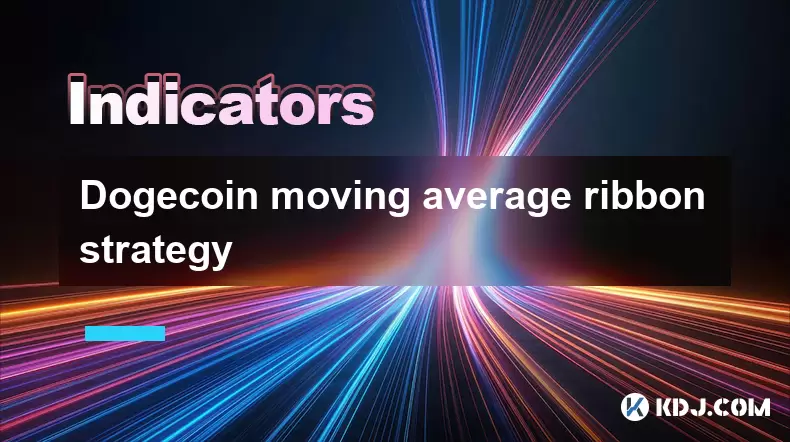
Dogecoin moving average ribbon strategy
Jul 05,2025 at 07:32pm
What is the Dogecoin Moving Average Ribbon Strategy?The Dogecoin moving average ribbon strategy is a technical analysis approach used by traders to identify potential trends and reversals in the price of DOGE. This method involves plotting multiple moving averages (MAs) on a price chart, typically of varying lengths, which visually form a 'ribbon' when ...
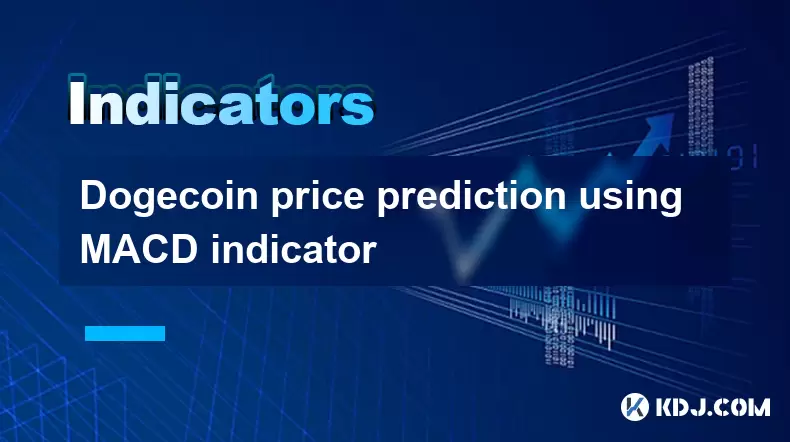
Dogecoin price prediction using MACD indicator
Jul 05,2025 at 07:18pm
Understanding the MACD Indicator in Cryptocurrency TradingThe Moving Average Convergence Divergence (MACD) is a popular technical analysis tool used by traders to identify potential price trends and reversals. It consists of three main components: the MACD line, the signal line, and the MACD histogram. The MACD line is calculated by subtracting the 26-p...
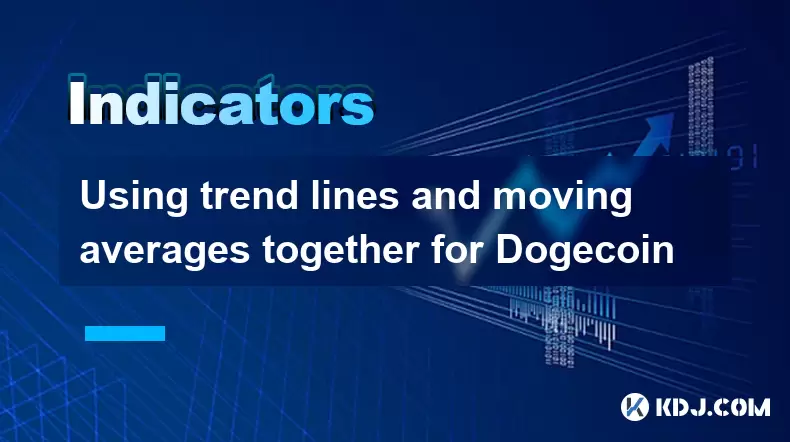
Using trend lines and moving averages together for Dogecoin
Jul 05,2025 at 07:16pm
Understanding Trend Lines in Cryptocurrency TradingTrend lines are essential tools for analyzing price movements in the cryptocurrency market. In Dogecoin trading, trend lines help identify potential support and resistance levels by connecting significant price points on a chart. When applied correctly, these lines can indicate whether the asset is in a...
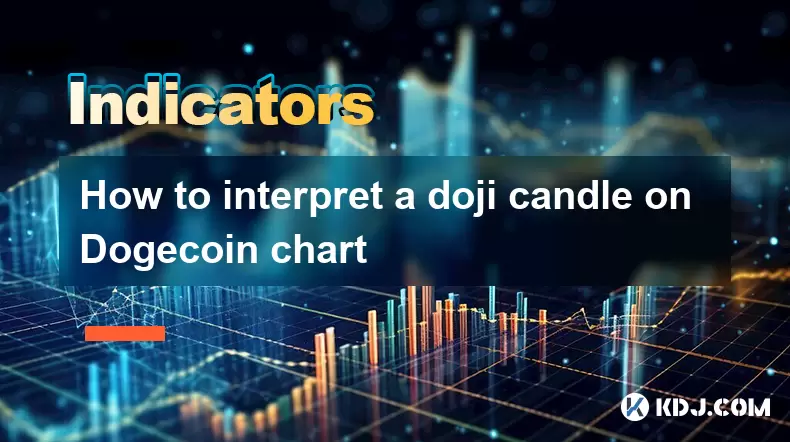
How to interpret a doji candle on Dogecoin chart
Jul 05,2025 at 07:49pm
Understanding the Doji Candlestick PatternA doji candle is a crucial technical indicator in cryptocurrency trading, especially when analyzing assets like Dogecoin. It represents market indecision and often signals potential reversals or continuation patterns. A doji forms when the opening and closing prices of an asset are nearly identical, resulting in...
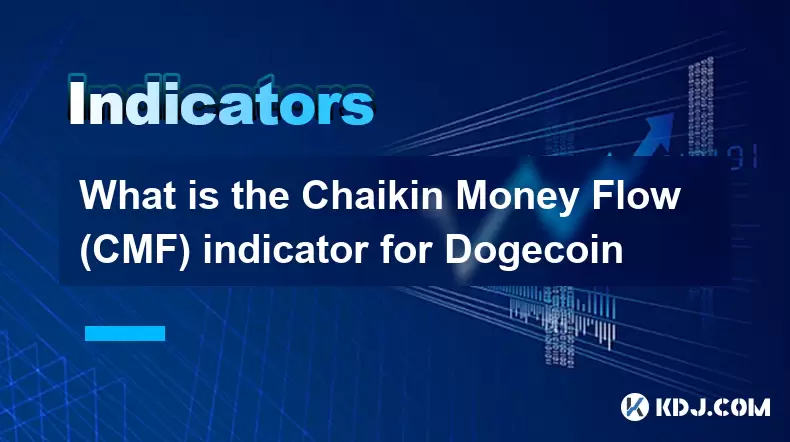
What is the Chaikin Money Flow (CMF) indicator for Dogecoin
Jul 05,2025 at 07:32pm
Understanding the Chaikin Money Flow (CMF) IndicatorThe Chaikin Money Flow (CMF) is a technical analysis indicator developed by Marc Chaikin to measure the accumulation and distribution of a financial asset over a specific period. It combines both price and volume data to assess whether institutional investors are actively buying or selling an asset. In...

How to set up a moving average crossover alert for Dogecoin
Jul 05,2025 at 07:33pm
Understanding Moving Averages and Their Relevance to DogecoinMoving averages (MAs) are among the most commonly used technical indicators in cryptocurrency trading. They help smooth out price data over a specific time period, offering traders a clearer view of trends. Dogecoin, being a highly volatile altcoin, often exhibits strong momentum when certain ...

Dogecoin moving average ribbon strategy
Jul 05,2025 at 07:32pm
What is the Dogecoin Moving Average Ribbon Strategy?The Dogecoin moving average ribbon strategy is a technical analysis approach used by traders to identify potential trends and reversals in the price of DOGE. This method involves plotting multiple moving averages (MAs) on a price chart, typically of varying lengths, which visually form a 'ribbon' when ...

Dogecoin price prediction using MACD indicator
Jul 05,2025 at 07:18pm
Understanding the MACD Indicator in Cryptocurrency TradingThe Moving Average Convergence Divergence (MACD) is a popular technical analysis tool used by traders to identify potential price trends and reversals. It consists of three main components: the MACD line, the signal line, and the MACD histogram. The MACD line is calculated by subtracting the 26-p...

Using trend lines and moving averages together for Dogecoin
Jul 05,2025 at 07:16pm
Understanding Trend Lines in Cryptocurrency TradingTrend lines are essential tools for analyzing price movements in the cryptocurrency market. In Dogecoin trading, trend lines help identify potential support and resistance levels by connecting significant price points on a chart. When applied correctly, these lines can indicate whether the asset is in a...

How to interpret a doji candle on Dogecoin chart
Jul 05,2025 at 07:49pm
Understanding the Doji Candlestick PatternA doji candle is a crucial technical indicator in cryptocurrency trading, especially when analyzing assets like Dogecoin. It represents market indecision and often signals potential reversals or continuation patterns. A doji forms when the opening and closing prices of an asset are nearly identical, resulting in...

What is the Chaikin Money Flow (CMF) indicator for Dogecoin
Jul 05,2025 at 07:32pm
Understanding the Chaikin Money Flow (CMF) IndicatorThe Chaikin Money Flow (CMF) is a technical analysis indicator developed by Marc Chaikin to measure the accumulation and distribution of a financial asset over a specific period. It combines both price and volume data to assess whether institutional investors are actively buying or selling an asset. In...
See all articles

























































































